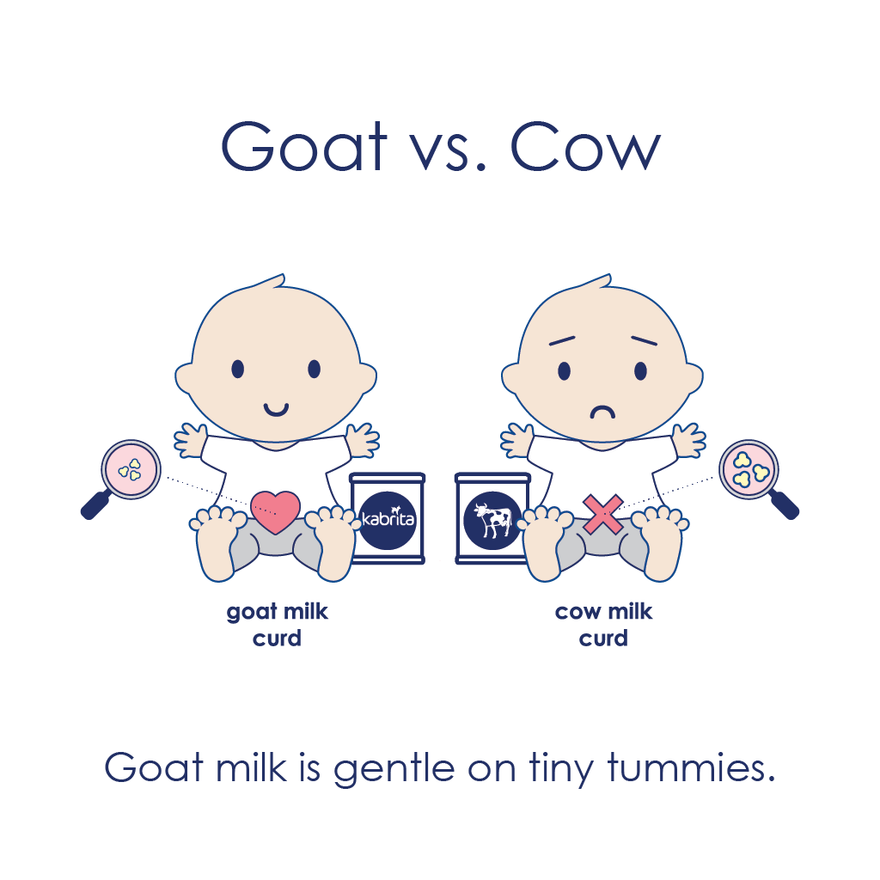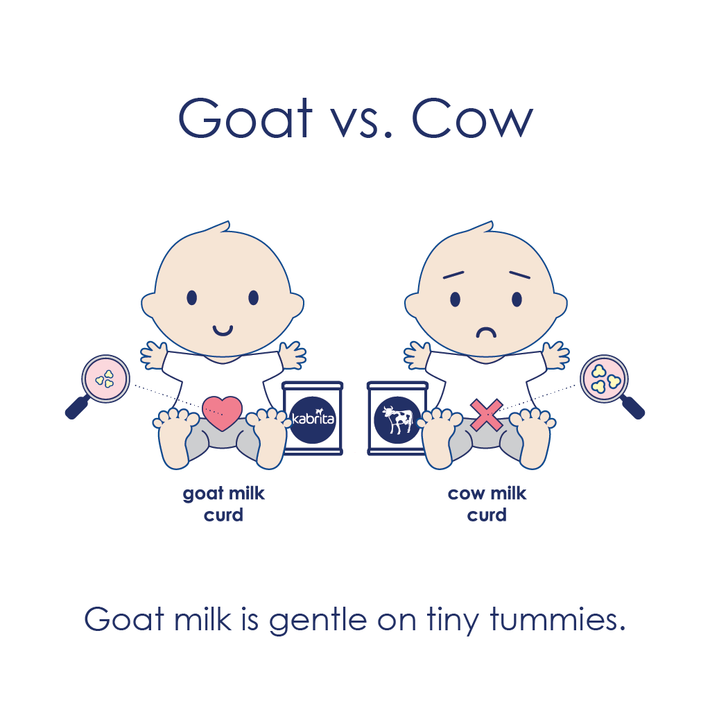Goat Milk vs Cow Milk Digestion: How Long Does it Take to Digest Milk?

Learn about the digestion of protein in milk and why making the switch from cow to goat milk protein may help ease tummy troubles for little ones.

According to the American Academy of Pediatrics, lactose intolerance is more common in older children and adults but is uncommon before 2 or 3 years of age. It may be protein in milk that is to blame for some of the tummy troubles related to cow milk seen in little ones.
Main Proteins in Milk
There are two main groups of proteins in cow and goat milk: whey and casein. Whey and casein are both made up of various, smaller micro-proteins. Whey proteins dissolve readily in water, while casein proteins group into small spheres, called micelles, to be soluble.
The acidic environment of the stomach helps break whey and casein proteins apart; whey proteins remain liquid in the stomach, and casein proteins ‘coagulate’ to form a curd.
Milk Curd in the Tummy
There are a few factors that contribute to the quality of milk curd formed by casein proteins in the stomach, such as the number of specific micro-proteins, like alphaS1-casein and the size of casein protein micelles.
A higher amount of alphaS1-casein protein in cow’s milk, along with smaller casein micelles, is associated with larger, tougher, and firmer curds. Less alphaS1-casein and larger casein micelles, as is seen in goat milk, is associated with smaller, softer, and looser curds.
Smaller, softer, and looser milk curds in the tummy, like those associated goat milk protein, may be easier to digest.
How Long Does it Take to Digest Milk
When it comes to ease of milk digestion, the quality of the milk curd formed in the tummy is essential. And, how quickly proteins break down may have an impact as well.
A study published in the Journal of Pediatric Gastroenterology and Nutrition compared the digestion kinetics of human milk with both cow and goat milk infant formula. The result shows that the kinetics of protein digestion of Kabrita Goat Milk Infant Formula is similar to human milk, while protein digestion of cow milk infant formula delays in comparison.
Other research has shown that goat milk proteins are degraded faster than cow milk proteins in both the stomach and small intestine. Goat whey, in particular, is broken down more quickly than cow whey.
Toddler Tummy Troubles and Milk
No parent likes to see their little ones suffer from uncomfortable tummy symptoms. Determining the cause of tummy troubles may require careful evaluation, so it’s essential to work with a health professional.
A useful starting point to see a potential relationship between foods and symptoms is to keep a 7-day diet diary (keep in mind that it may take a few days to develop symptoms related to a food trigger). Since goat milk protein forms a gentler curd in the tummy than cow milk protein, it may be a solution for children with tummy troubles associated with cow milk consumption*. For a more in-depth look at minor issues in toddlers, please visit our Symptom Spotlight pages.
Kabrita Goat Milk Toddler Formula may be an option for little ones during feeding transitions, such as weaning and supplementing, or those with minor issues associated with cow milk sensitivity*.
*Not suitable for children with confirmed cow milk protein allergy